When we think of ancient marine predators, our minds often leap to massive creatures like megalodon or mosasaurs. However, for over 300 million years, a different group of organisms dominated the prehistoric seas – the ammonites. These cephalopods, with their distinctive spiral shells and remarkable adaptations, weren’t just passive inhabitants of ancient oceans but rather sophisticated marine conquerors. Their evolutionary success, spanning from the Devonian period to the end of the Cretaceous, far outstrips many more celebrated prehistoric creatures. The ammonite’s tale is one of evolutionary triumph, spectacular diversity, and ultimate extinction – a story of true oceanic royalty whose legacy remains preserved in rock formations worldwide.
The Evolutionary Marvel of Ammonites
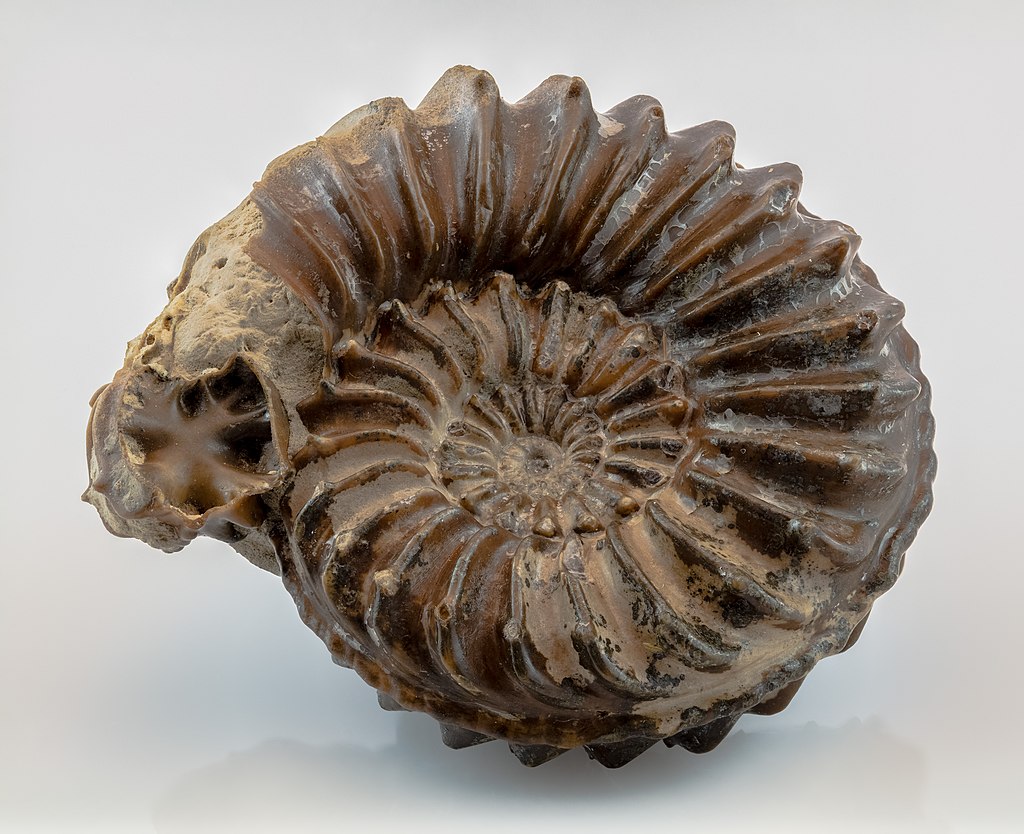
Ammonites belonged to the cephalopod family, making them relatives of modern squids, octopuses, and nautiluses. They evolved from straight-shelled nautiloids around 400 million years ago, developing their characteristic spiral shells through a remarkable evolutionary innovation. This coiled design allowed ammonites to pack more body mass into a compact form while maintaining buoyancy. The spiral shell wasn’t merely decorative but represented a revolutionary biological adaptation that enabled efficient movement, protection, and buoyancy control. Unlike their modern nautilus cousins who have remained relatively unchanged, ammonites underwent rapid and diverse evolutionary pathways, creating a success story spanning over 300 million years – an extraordinarily long tenure for any animal group.
Shell Architecture: Nature’s Perfect Design
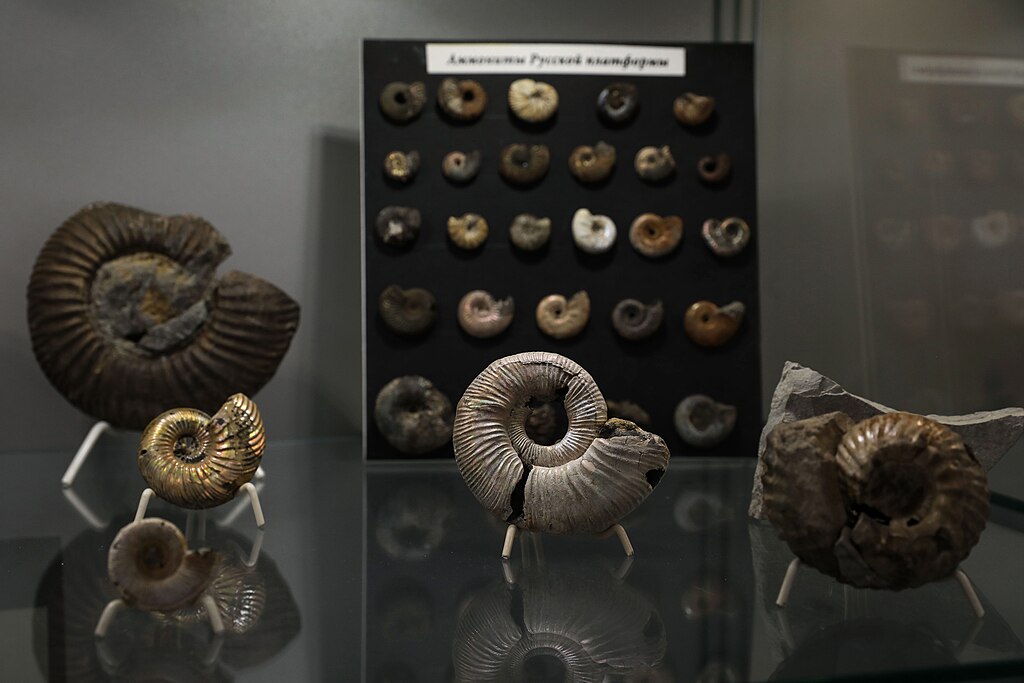
The ammonite shell represents one of nature’s most elegant architectural achievements, combining strength, buoyancy, and growth potential. Their shells were divided into chambers (called camerae) separated by walls known as septa, creating a structure reminiscent of modern nautilus shells but with significantly more complex suture patterns where the septa met the outer shell. These elaborate suture patterns – which appear as intricate, fractal-like lines on fossil specimens – weren’t merely decorative but provided critical structural reinforcement that allowed ammonites to dive deeper than their nautiloid ancestors. The outermost chamber housed the living animal, while the older chambers contained gas that helped regulate buoyancy with remarkable precision. This chambered system effectively created nature’s first submarine, allowing ammonites to ascend and descend through different ocean layers with minimal energy expenditure.
Size Range: From Micromonites to Giants
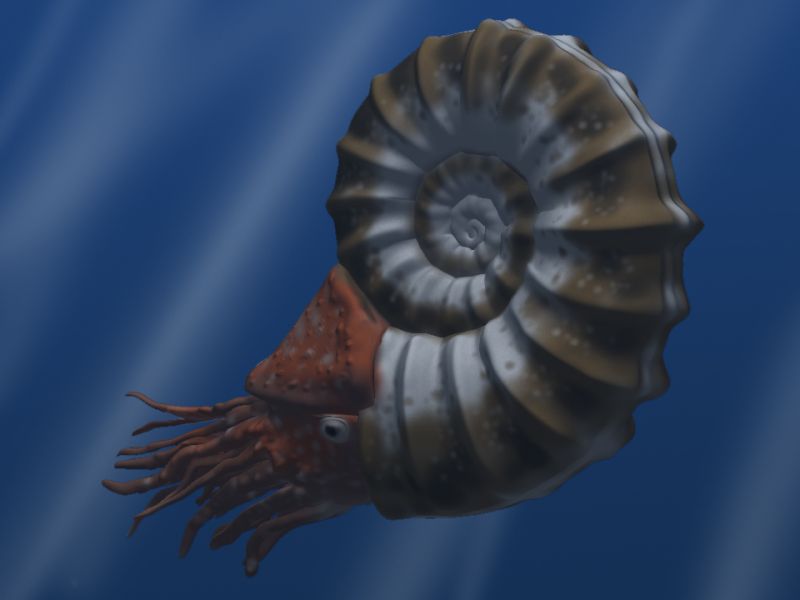
One of the most remarkable aspects of ammonite biology was their extraordinary size range, spanning from tiny specimens smaller than a coin to behemoths rivaling modern truck tires. The smallest ammonites measured just a few millimeters across, while giants like Parapuzosia seppenradensis reached diameters exceeding 2.5 meters (over 8 feet). This size diversity allowed ammonites to occupy numerous ecological niches throughout the water column. Their size also fluctuated dramatically throughout their evolutionary history, with certain periods favoring gigantism while others saw miniaturization trends. Interestingly, the largest ammonites appeared shortly before their ultimate extinction, suggesting that gigantism might have been an evolutionary response to changing environmental pressures during the late Cretaceous. This extraordinary size range demonstrates the adaptability that helped ammonites dominate marine ecosystems for hundreds of millions of years.
Astonishing Diversity and Adaptability

Few animal groups have ever achieved the spectacular diversity displayed by ammonites throughout their reign. Paleontologists have identified over 10,000 ammonite species, though the actual number was likely much higher. Their shells evolved into a bewildering array of shapes beyond the typical spiral – some developed elaborate spines, ribs, and knobs, while others took on straight, hook-shaped, or helically twisted forms. This morphological diversity wasn’t merely aesthetic but represented adaptations to different predation pressures, habitat preferences, and feeding strategies. Ammonites thrived in virtually every marine environment, from shallow tropical waters to cold, deep-sea environments. Their ability to rapidly evolve new forms in response to environmental changes gave them an edge over less adaptable marine organisms. This extraordinary adaptability enabled ammonites to survive multiple mass extinction events that wiped out countless other species before their ultimate demise at the end of the Cretaceous period.
Masters of Marine Mobility
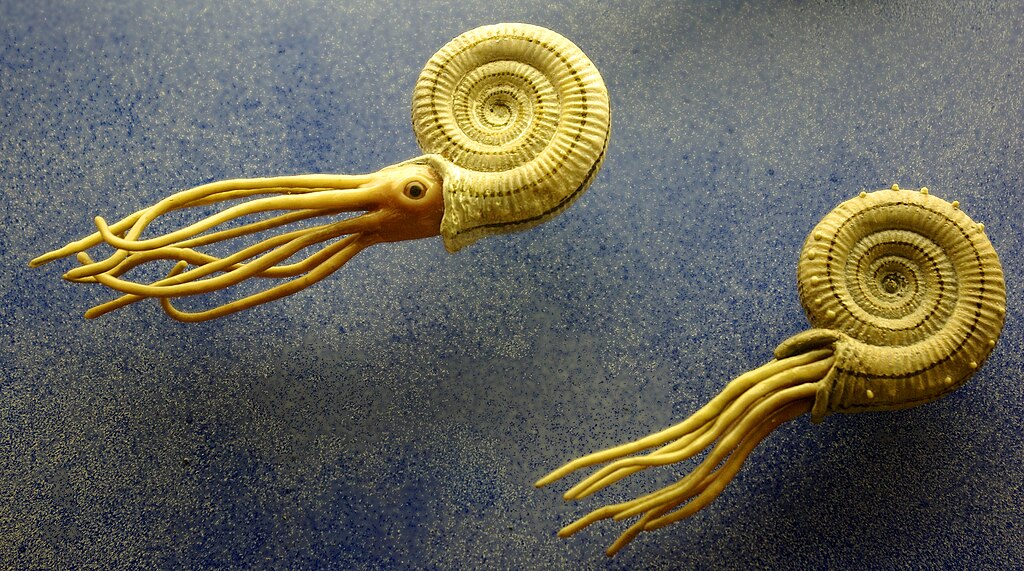
Ammonites weren’t merely passive drifters but sophisticated swimmers with remarkable mobility for shelled organisms. Unlike some modern mollusks, ammonites could maneuver with precision through complex marine environments. They employed a form of jet propulsion similar to modern cephalopods, drawing water into their mantle cavity and forcefully expelling it through a flexible tube called the hyponome. This mechanism allowed them to dart backward rapidly to escape predators or pursue prey. Their chambered shells, meanwhile, provided fine-tuned buoyancy control superior to many other marine organisms of their time. Research suggests that different ammonite species developed specialized swimming adaptations – some were likely slow but efficient cruisers, while others could execute rapid bursts of speed. This mobility advantage allowed ammonites to exploit feeding opportunities and escape dangers with greater success than many contemporary marine creatures, contributing to their long-term dominance of prehistoric oceans.
Predatory Prowess and Feeding Strategies
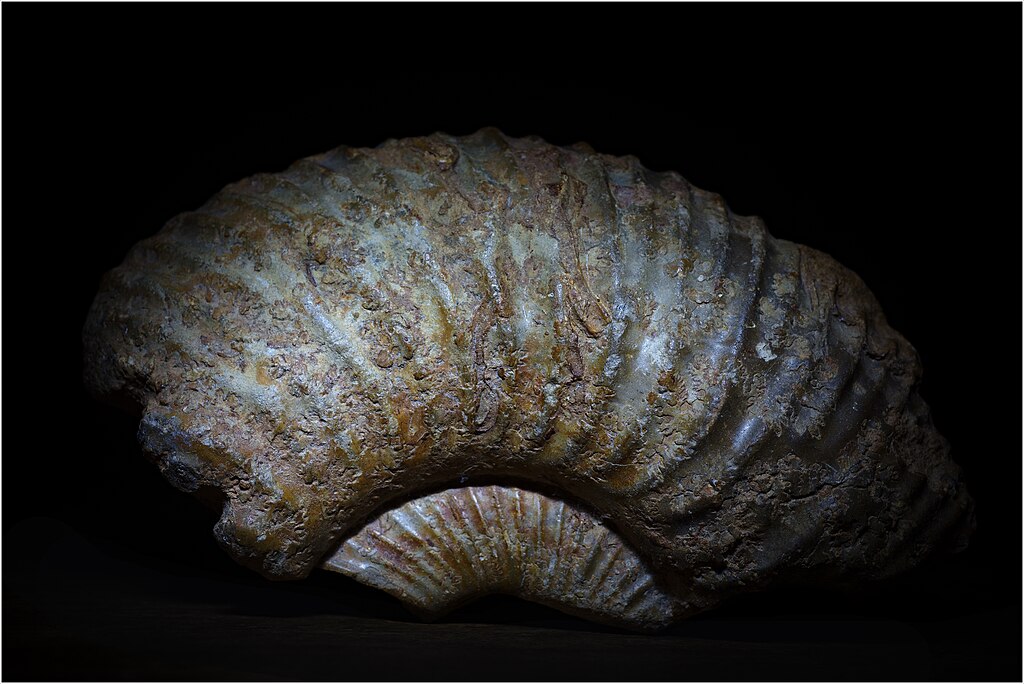
Contrary to their passive appearance in fossil form, ammonites were formidable predators equipped with sophisticated hunting apparatus. Like their modern cephalopod relatives, ammonites possessed a ring of tentacles surrounding a parrot-like beak capable of crushing shells and tearing flesh. While soft tissues rarely fossilize, exceptional specimens have revealed impressions of their radula – a tongue-like organ covered with rows of teeth used for rasping food. Ammonites likely employed various hunting strategies depending on their species and size. Smaller species probably fed on plankton and tiny crustaceans, while larger forms hunted fish and other cephalopods. Some paleontologists suggest that certain ammonite species may have possessed venom like modern cephalopods. Their excellent mobility, combined with keen sensory organs, made them efficient hunters in the prehistoric seas. This predatory versatility allowed ammonites to exploit multiple food sources, contributing to their evolutionary success across diverse marine ecosystems.
Ecological Impact as Keystone Species

Throughout their 300-million-year reign, ammonites functioned as keystone species that shaped entire marine ecosystems. Their abundance and diversity meant they occupied multiple trophic levels within the food web – serving as both predators and prey that regulated population dynamics of numerous marine species. Young ammonites provided crucial food sources for larger predators, while adult ammonites helped control populations of smaller marine organisms. The ecological niches occupied by ammonites were so numerous and significant that their eventual extinction created massive ripple effects throughout marine ecosystems. Studies of fossil assemblages show that ammonite population booms and busts influenced everything from plankton communities to apex predator distribution. Their calcite shells also played a role in ocean chemistry, sequestering carbon and contributing to marine sediment formation. Few animal groups have ever exerted such profound and long-lasting influence over marine ecosystem structure and function.
Sexual Dimorphism and Reproduction

Ammonites exhibited fascinating reproductive biology characterized by pronounced sexual dimorphism – physical differences between males and females. Paleontologists can often distinguish male “microconch” specimens (with smaller, simpler shells) from female “macroconch” specimens (with larger, more elaborate shells). This size difference likely related to the females’ need to produce and protect eggs. Evidence suggests ammonites reproduced through a sophisticated process where females laid large clutches of eggs, possibly attaching them to floating vegetation or seafloor substrates. Unlike nautiluses that produce a few large eggs, ammonites likely produced numerous smaller eggs, allowing for rapid population growth during favorable conditions. Some exceptional fossils show evidence of egg chambers or embryonic shells, giving us glimpses into their reproductive strategies. This reproductive flexibility contributed significantly to ammonites’ evolutionary success, allowing them to rapidly colonize new habitats and recover from population crashes throughout their long history.
Evolutionary Arms Race with Predators

Ammonites engaged in an intense evolutionary arms race with their predators, driving mutual adaptations that shaped marine ecosystems for millions of years. As fish, marine reptiles, and other cephalopods evolved more sophisticated means of attacking ammonites, these resilient mollusks responded with remarkable defensive innovations. Some developed thicker shells, while others grew protective spines that deterred predators. Many ammonite lineages evolved increasingly complex shell geometries with reinforced structures that resisted crushing. Certain species developed the ability to produce ink clouds like modern cephalopods, while others may have used camouflage or rapid escape maneuvers. Fossil evidence including healed injuries and bite marks on ammonite shells provides direct evidence of these predatory interactions. Particularly compelling are fossils showing mosasaur bite marks or crab-inflicted damage, demonstrating the intense predation pressure ammonites faced. This perpetual defensive innovation helped ammonites maintain their dominance despite evolving threats throughout the Mesozoic era.
Ammonites as Living Fossils of Their Time

Ammonites occupied a position in prehistoric oceans analogous to “living fossils” like the modern nautilus – creatures that preserve ancient biological designs while continuing to thrive in contemporary environments. However, unlike true living fossils that remain relatively unchanged, ammonites were in a constant state of evolution, maintaining their fundamental chambered-shell design while rapidly adapting to changing conditions. This evolutionary plasticity made them something more than living fossils – they were evolving archives that recorded changing ocean conditions throughout the Paleozoic and Mesozoic eras. Their shells incorporated chemical signatures from the seawater, allowing modern scientists to reconstruct ancient ocean temperatures, chemistry, and even current patterns. Ammonites effectively functioned as evolutionary barometers, with their shell designs shifting in response to predation pressure, climate change, and other environmental factors. This combination of conserved ancestral traits and rapid adaptability made ammonites unique evolutionary timepieces during their long reign.
Indicators of Geological Time
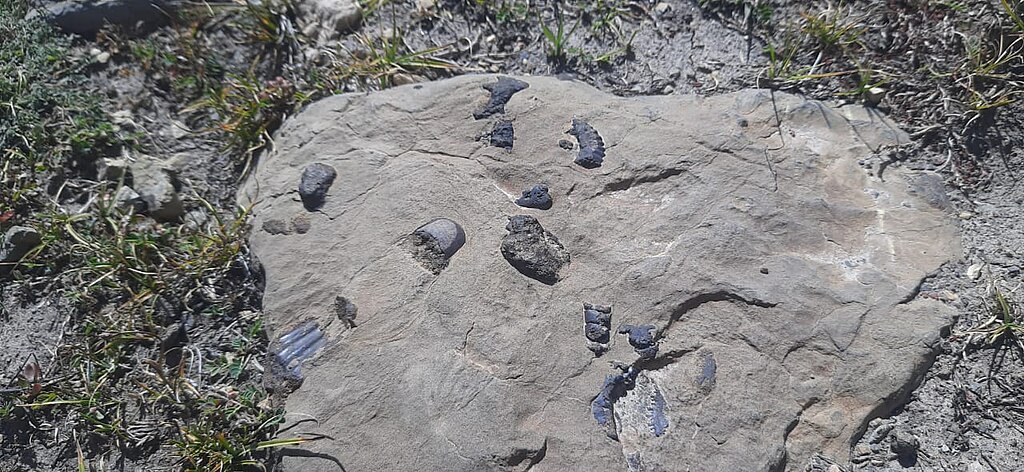
Ammonites serve as invaluable tools for geologists and paleontologists through their function as index fossils – organisms that define specific geological periods with exceptional precision. Their rapid evolution created distinctive species with relatively short geological lifespans, allowing scientists to date rock formations with remarkable accuracy simply by identifying the ammonite species present. This characteristic makes ammonites among the most valuable biostratigraphic markers in paleontology. Geologists have established detailed ammonite zones that sometimes represent time slices as narrow as a few hundred thousand years – extraordinary precision for rocks that may be over 100 million years old. Different ammonite species are so reliably associated with specific time periods that they’ve become crucial calibration points for the geological timescale. Their global distribution further enhances their value, allowing scientists to correlate rock formations across different continents. This stratigraphic utility transformed our understanding of Earth’s geological history and continues to provide crucial data for fields ranging from petroleum exploration to climate science.
The Mystery of Their Ultimate Extinction
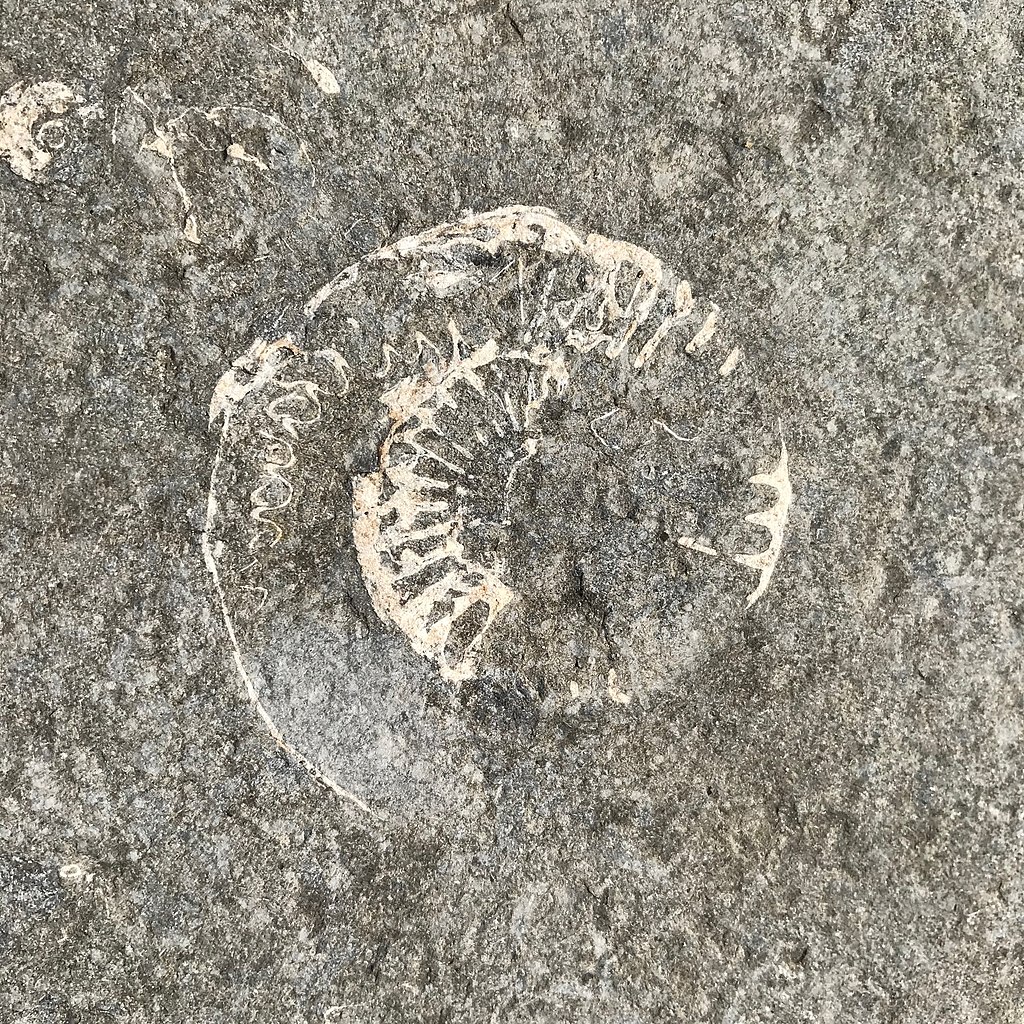
The abrupt disappearance of ammonites at the end of the Cretaceous period represents one of paleontology’s most significant extinction events and continues to intrigue scientists. After surviving multiple mass extinctions throughout their 300-million-year history, including the devastating Permian-Triassic event that eliminated roughly 96% of marine species, ammonites finally succumbed during the Cretaceous-Paleogene (K-Pg) extinction approximately 66 million years ago. This extinction, famously associated with the Chicxulub asteroid impact, created catastrophic conditions including acid rain, global wildfires, and prolonged darkness that disrupted marine food chains. While their nautilus relatives somehow survived this cataclysm, ammonites perished completely. Recent research suggests that ammonites’ reproductive strategy – producing many small eggs near the ocean surface – may have made them particularly vulnerable to the surface ocean acidification and plankton collapse that followed the impact. Additionally, some evidence indicates ammonites were already in decline before the asteroid, possibly due to climate changes associated with the massive volcanic eruptions of the Deccan Traps. This perfect storm of environmental stressors finally ended the reign of these oceanic monarchs.
Legacy in Modern Culture and Science

Ammonites continue to fascinate both scientists and the public, leaving an enduring legacy that extends far beyond their biological extinction. Their distinctive spiral shells have inspired artists, architects, and designers throughout human history, appearing in everything from ancient jewelry to modern building designs. In many cultures, ammonite fossils were attributed mystical properties – medieval Europeans called them “snake stones,” believing they were petrified serpents, while Blackfoot Native Americans called them “iniskim” and considered them sacred objects with healing powers. Scientifically, ammonites remain central to paleontological research, with new analytical techniques continuing to extract information from their fossils about ancient ocean conditions, evolutionary processes, and extinction dynamics. Their mathematical spiral form, which follows the logarithmic Fibonacci sequence, has interested mathematicians studying natural geometry. The ammonite’s perfect spiral has even influenced engineering designs requiring structural efficiency. Though physically extinct, these magnificent creatures continue to influence human knowledge, art, and design, ensuring their legacy persists despite their disappearance millions of years ago.
Conclusion: The Undisputed Monarchs of Ancient Seas
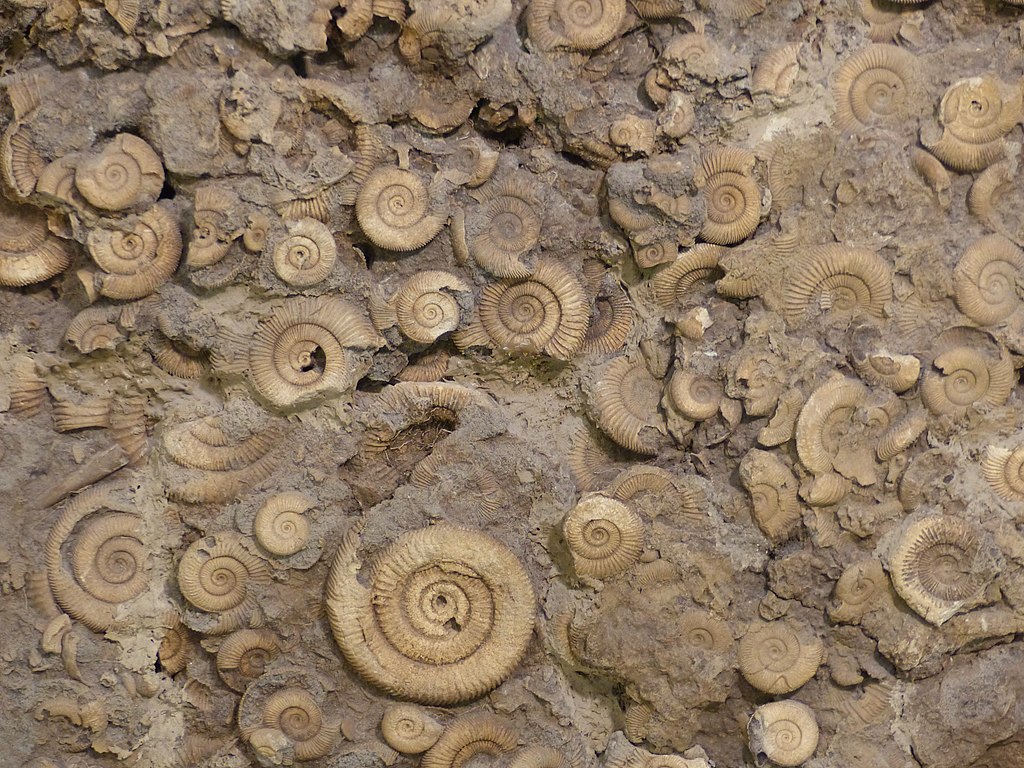
Ammonites truly earned their status as the kings of prehistoric oceans through their remarkable evolutionary journey. For over 300 million years – far longer than dinosaurs roamed the land – these cephalopods dominated marine ecosystems through unparalleled adaptability, diverse feeding strategies, and sophisticated biological design. Their spectacular diversity of over 10,000 species demonstrates a evolutionary success story almost unmatched in animal history. While they may lack the popular fame of other prehistoric creatures like dinosaurs or megalodons, ammonites’ influence on marine ecosystems was arguably more profound and certainly more enduring. Their ultimate extinction, while marking the end of their physical existence, couldn’t erase their scientific significance or cultural impact. In the grand narrative of Earth’s biological history, few creatures can match the ammonite’s combination of evolutionary success, ecological importance, and lasting scientific value. They remain, in fossil form, the true monarchs of ancient seas – their spiral shells serving as royal insignia of creatures that once ruled the world’s oceans with unrivaled success.



